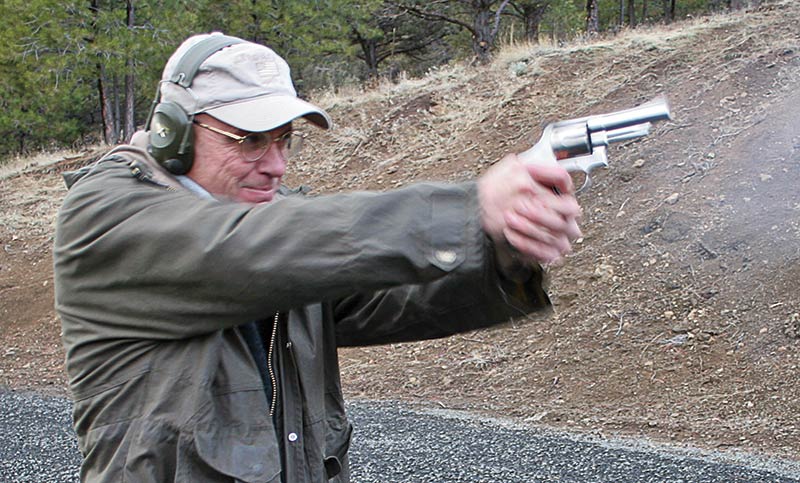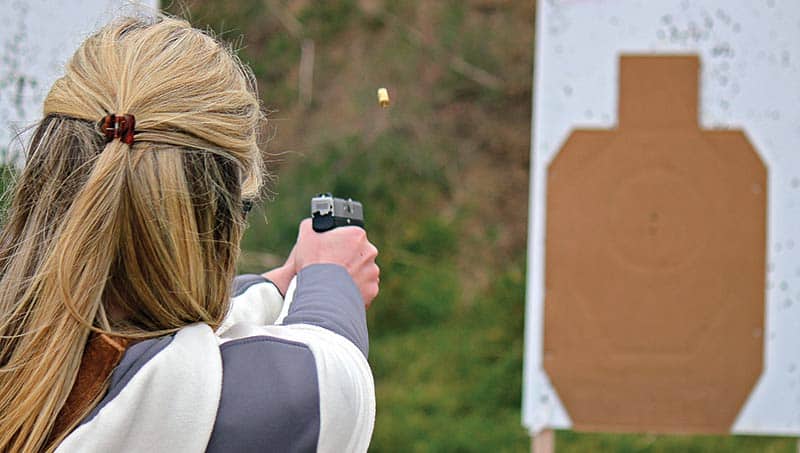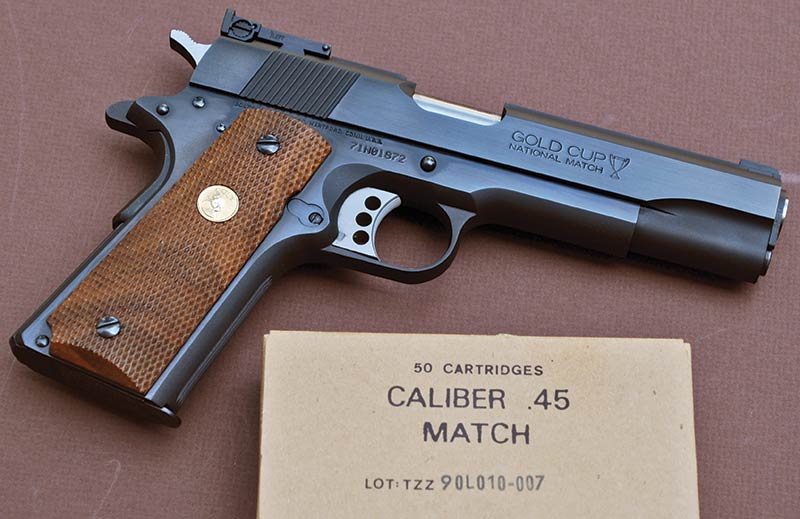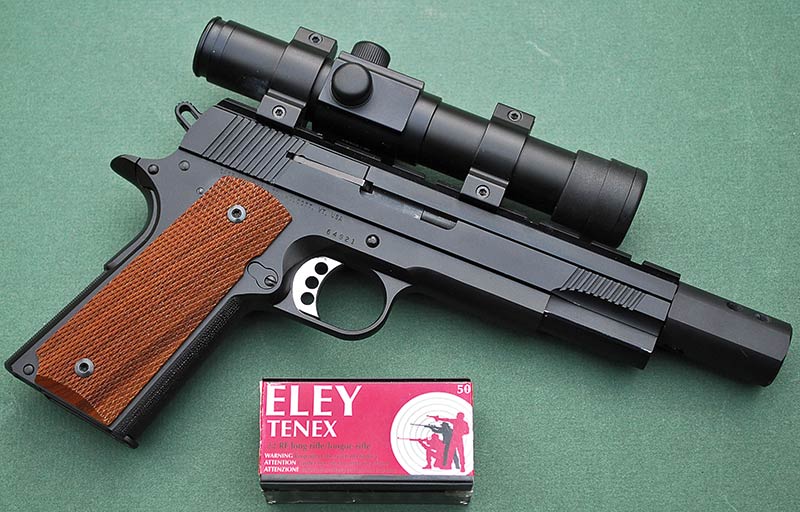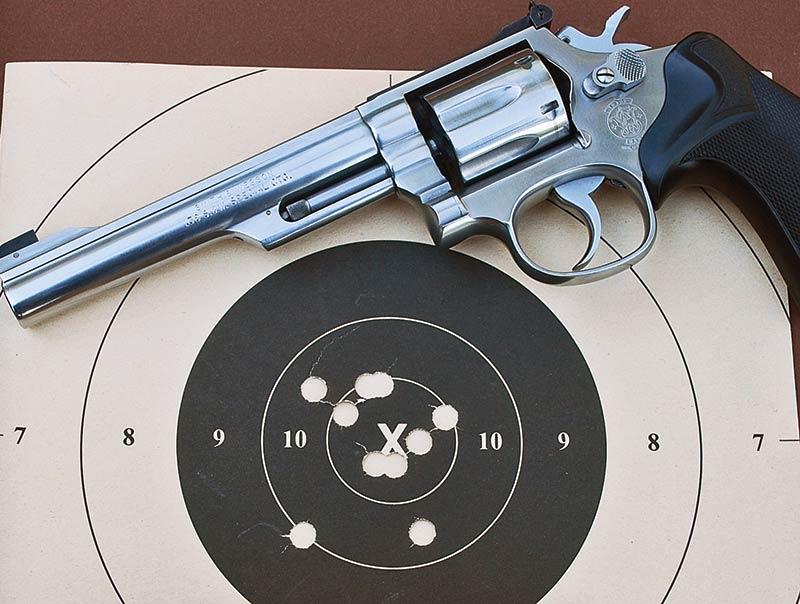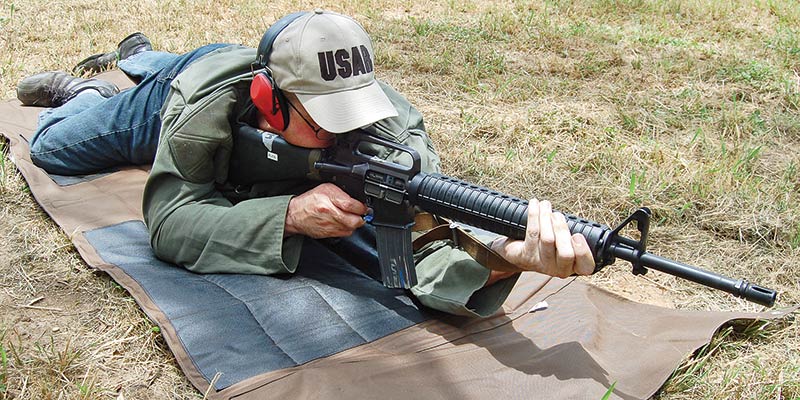Fundamentals Still Rule
Trigger Time Builds Confidence Which
Means Hits When They Count!
The process of teaching someone to shoot can get tangled up in egos and past experience, good or bad. Excellent instructional technique, coupled with credibility and knowledge, will usually win over the skeptical. Make it enjoyable and challenging and you’ll have a successful training strategy.
The same holds true for your own training regimen. It needs to be relevant and based on an analysis of what you want to accomplish, while still pushing your limits.
Marksmanship with rifle and pistol isn’t something new. The basics have been around since gun barrels were rifled and weapons were shot at targets. It’s not rocket science — just align the sights and press the trigger in such a manner you don’t disturb sight alignment.
Everything in shooting, whether hitting a pie plate at the range, winning a match or prevailing in a firefight, revolves around sight alignment and trigger control. While we’re primarily focusing on pistol shooting here, the basic rules apply with equal force to the rifle. A good pistol shooter will make an excellent rifleman and an expert rifleman will make the transition easily to machineguns and other crew-served weapons.
A Well-Worn Path
“Crawl, walk, run.” I heard this constantly as a young soldier and applied it later as an Army shooting instructor. Start the trainee off slowly with demands and expectations low. Explain the concepts and instill the fundamentals. As the trainee’s confidence and ability grows, raise the standards and introduce new drills.
Once the basics are mastered, qualification verifies the trainee’s progress. The last step would be advanced shooting, utilizing CQB (what the Army calls “short-range marksmanship”), tactical scenarios, speed reloads, multiple targets, etc.
But before you head to the range, a little homework is in order. Best advice I can give is to acquire an Army marksmanship training guide on pistol marksmanship. It’s put out by the US Army Marksmanship Unit (AMU) in Ft. Benning, Georgia. You can find one online or buy a copy. Considered the bible of conventional pistol shooting, it’ll tell you how to shoot a pistol. The information it contains is based — literally — on millions of rounds fired by champion Army shooters. I still refer to mine as a refresher prior to a new shooting season. Read it and commit it to memory. If you want to learn how to shoot a pistol, this Army manual will show you the way.
What’s always worked for me is realizing shooting is a positive act. You must remember what your sights looked like when you shot an “X” or a “10,” then plant the memory into your subconscious. Analyze your poor shots and forget them — don’t dwell on the negative. Finish your practice sessions on a positive note. Put your guns away after a few good targets, and then think about how you shot them on the ride home. A great range day doesn’t mean hundreds of rounds expended.
Dry fire daily. Ten careful squeezes in a safe direction (not at the TV) is enough. Focus intently on sight alignment and trigger squeeze for the several minutes it takes. This is where you start your mental game. Obviously, clear your pistol, verify, and then check it again before any dry-fire session.
During your live fire outings don’t plink, don’t shoot any rapid fire, don’t shoot at silhouettes and stay away from any tactical stuff. That’ll come later, after you’ve learned the fundamentals. The object is to be able to shoot tight groups consistently. It’s boring and monotonous, but it’ll pay off later. Plan and visualize your practice session and your actual shooting beforehand. Take notes and record your progress. You’ll be able to spot areas you’ll need to work on in the future. Shooting is a lot like weight training — steady progress over a given period of time.
Matches & Tactics
I’ve read quite a few posts in gun blogs and forums bad-mouthing competitive marksmanship and precision shooting. The criticism usually centers on match shooting being irrelevant and even dangerous to real-world scenarios. To put it very bluntly, that’s stupid. Marksmanship fundamentals don’t change, but the tactical situation will. Being an excellent pistol (or rifle) shot gives you advantages in consistency, speed and accuracy others don’t possess. Self-confidence, based on thousands of rounds, is present in a good competitor. Confidence in your ability, coupled with training, wins gunfights as well as matches.
Don’t confuse tactics with marksmanship. They are not the same. They complement each other, but are different and shouldn’t be combined during initial training. Learn to shoot well first. A tactical genius can lose a gunfight by missing the target. Reinforcing the basics and searing them into your subconscious mind by thousands of rounds fired under match conditions imparts intense focus. Being able to focus under life-threatening pressure wins deadly encounters. Don’t take my word for it. Others who have “been there and done that” have stated competitive shooting works.
Legendary Marine sniper Carlos Hathcock was a fierce rifle competitor from his early Marine days. He set the Marine Corps record of 248×250 on the USMC “A” course, which, I believe, still stands. In 1965 he won the Wimbledon Cup at Camp Perry. Because of his competitive skills, “Gunny” Hathcock was sought out in Vietnam shortly after his arrival in 1966 and assigned to the newly formed Marine sniper program. His feats as a sniper during two combat tours were based on his exceptional marksmanship skills honed on USMC rifle ranges.
Bill Allard, who was in more shootings than any other cop in the history of the NYPD, was adamant his bullseye shooting background was critical to his survival in several gunfights. Sgt. Major Kyle Lamb excelled in 3-Gun matches; competition sharpened the shooting skills he used during five Iraq combat tours.
Probably the best example of precision marksmanship in combat was Sgt. Alvin York, WWI Medal of Honor awardee. York grew up in rural Tennessee and was an outstanding rifleman long before being drafted into the US Army. He competed and hunted from an early age with other excellent marksmen, using a muzzle-loading rifle.
There was no doubt in York’s mind he was a superior rifle shot and his confidence carried over into his battlefield performance. Sgt. York’s skill with both rifle and pistol, coupled with his infantry training and battlefield experience, made him a deadly opponent. York said in a postwar interview that head-shooting German machine-gunners in the Argonne Forest was far easier than hitting turkeys in the Tennessee hills.
Now, I’m not saying you must be a world-class competitive shooter in order to be considered a marksman. A competitive mindset is mandatory, though. Always compete when you practice. Shoot against yourself — try to beat your last best target. Shoot for lunch against your range partner. Never plink; always launch a round downrange with a purpose. Exercise patience, train hard and strive for excellence in every range session. The road to superiority with your chosen weapon will be difficult, frustrating and demanding, but well worth the effort.
Hone Your Skills
You’ve got the basics down — now what? You can continue to exercise your newfound ability for just the enjoyment of it. Nothing wrong with that at all — spending time at the range doesn’t need justification. But some people will want a new challenge. Match shooting sharpens your marksmanship skills, adds a new dimension of stress (shoulder-to-shoulder competition) and gives you better insight into your actual skill level. Personally I like bull’s-eye, but any competitive shooting sport is going to make you a better marksman.
Learning to shoot well one-handed at small targets is very difficult, but extremely satisfying. Bull’s-eye is a sport you can excel in well into your twilight years, if you’re physically fit. It’s primarily a mental game; focusing on the mechanics of launching a perfect shot is what bull’s-eye is all about.
The best way to get started in bull’s-eye (or most any other shooting sport) is to go to a local club match and observe. Don’t participate in the first couple of matches, watch the shooters and the course of fire and decide if this is what you want to do. Look at the equipment — take note what the good shooters are using. Make friends with the match director and the range people. Every range I’ve been to welcomes new blood.
Buy a good .22 semi-auto to start with and just compete in the .22 phase your first season. If you later decide bull’s-eye isn’t for you, you’re not out a lot. Purchase extra equipment and other guns later, when you’ve gained the experience to know what you actually need. Listen, practice, dry-fire and practice some more, and the one-hole rapid-fire groups you see the big dogs shoot will come. Then you’ll know it was worth it.
